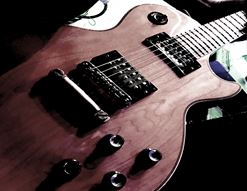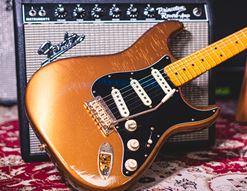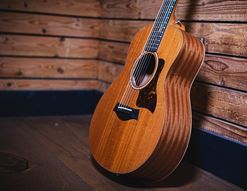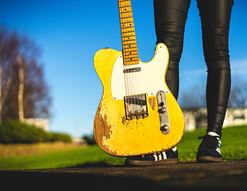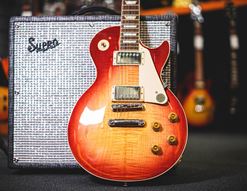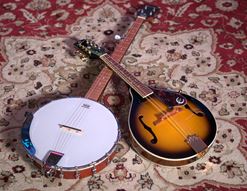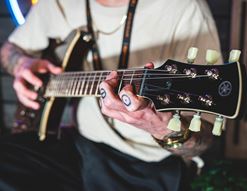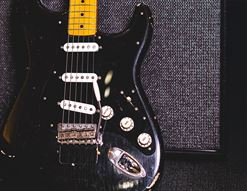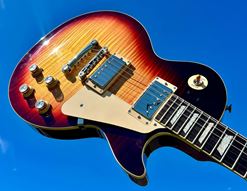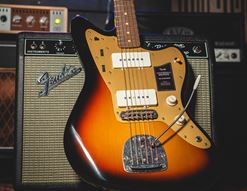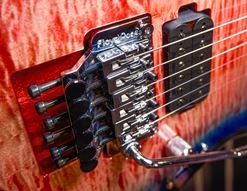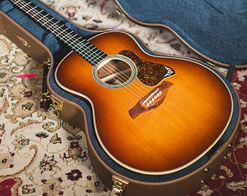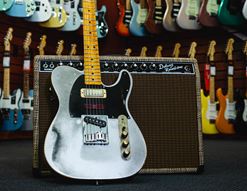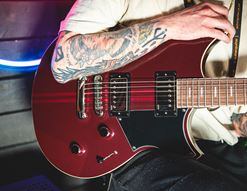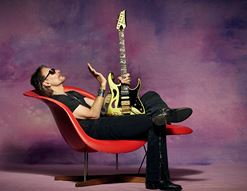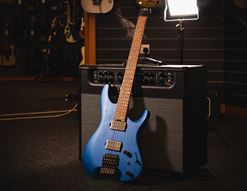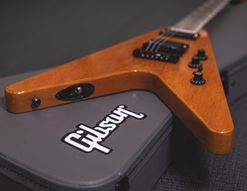Yamaha are a brand with over 60 years of experience in the electric guitar world. As they are in most areas of their industry, Yamaha built good, reliable stuff and for many of us, they’ve been an integral part of our own guitar stories.
From learning to mastering the instrument, Yamaha have a selection of guitars available, and they currently fall into three distinct styles. This is what I’m going to be checking out today, so if you’re eyeing up a Yamaha electric guitar, give this blog a look over and you’ll come away fully knowledged up!
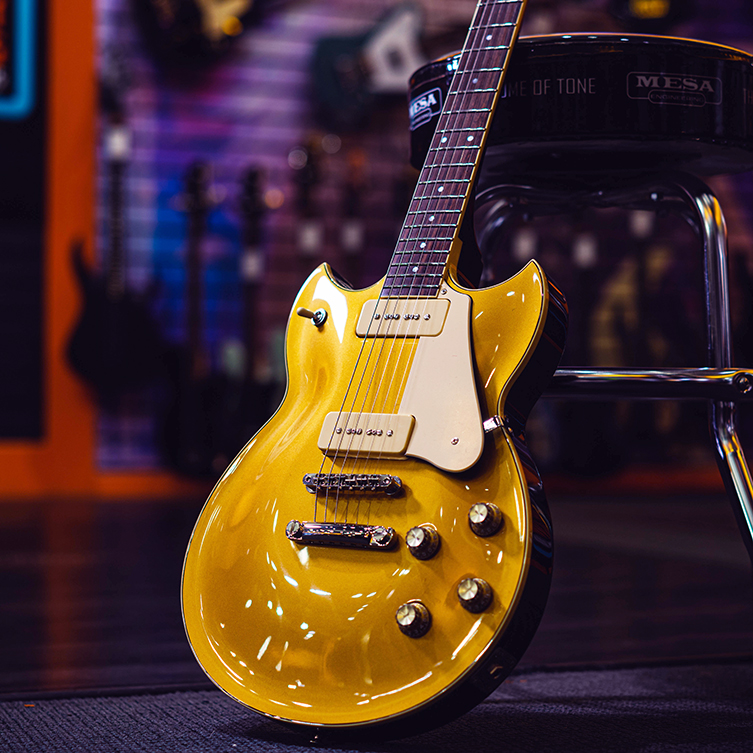
Pacifica
I’ll start with what is probably Yamaha’s best selling and most -recognised guitar: the Pacifica. It’s a Superstrat through-and-through, designed in Los Angeles in 1989 as a direct solution for session ‘gunslingers’ needing a high performance guitar. It had to be versatile and have a look that would fit into a number of bands and styles.
In time, Tele-style guitars appeared (including a signature model for jazz artist Mike Stern) but the enduring image is that of a souped-up S-style. Coming out of the shredtastic 80s hair metal scene, this comes as no surprise, but the mostly sober looks of the Pacifica spoke to a newly emerging taste for slightly less neon-looking speed machines.
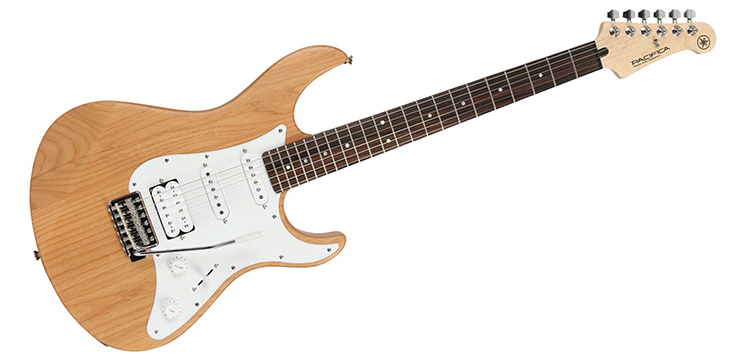
In its classic HSS guise with the shortened pickguard and slightly sharp curves, the Pacifica covers a ton of ground, so there isn’t a particular style it either dominates or ducks away from.
The Pacifica has always been tied to best-in-class beginners guitars, partly because the entry level Pacifica 112 model won continual prizes and awards. In truth, there’s a Pacifica to suit most wallets and purses, including a newly released set - the Pacifica Standard Plus and the Pacifica Professional. These pack sets of special Reflectone pickups, created by no less a luminary than Rupert Neve!
The Pacifica, then, is an all-rounder that’s well loved by the guitar community in general, and is available at many price points, all of which have a shared Superstrat aesthetic.
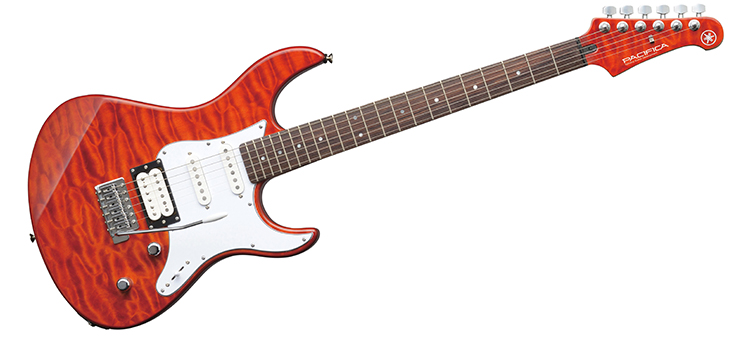
Revstar
The Revstar is a rare thing indeed: a genuinely new guitar design that not only looks great and ‘works’, but also isn’t super-specific. It’s not easy to create a new silhouette that finds favour with contemporary guitarists, but when you see Chris Buck, the Smashing Pumpkins and many others adopting the Revstar, it’s proof that the style is becoming accepted.
Only a few years old, the Revstar design is actually inspired by the ‘Cafe racer’ vibe from 60s London: the colours, detailing and lines of the Revstar range pay tribute to this stylish time, which makes more sense when you consider that Yamaha are also one of the world’s biggest motorcycle makers!
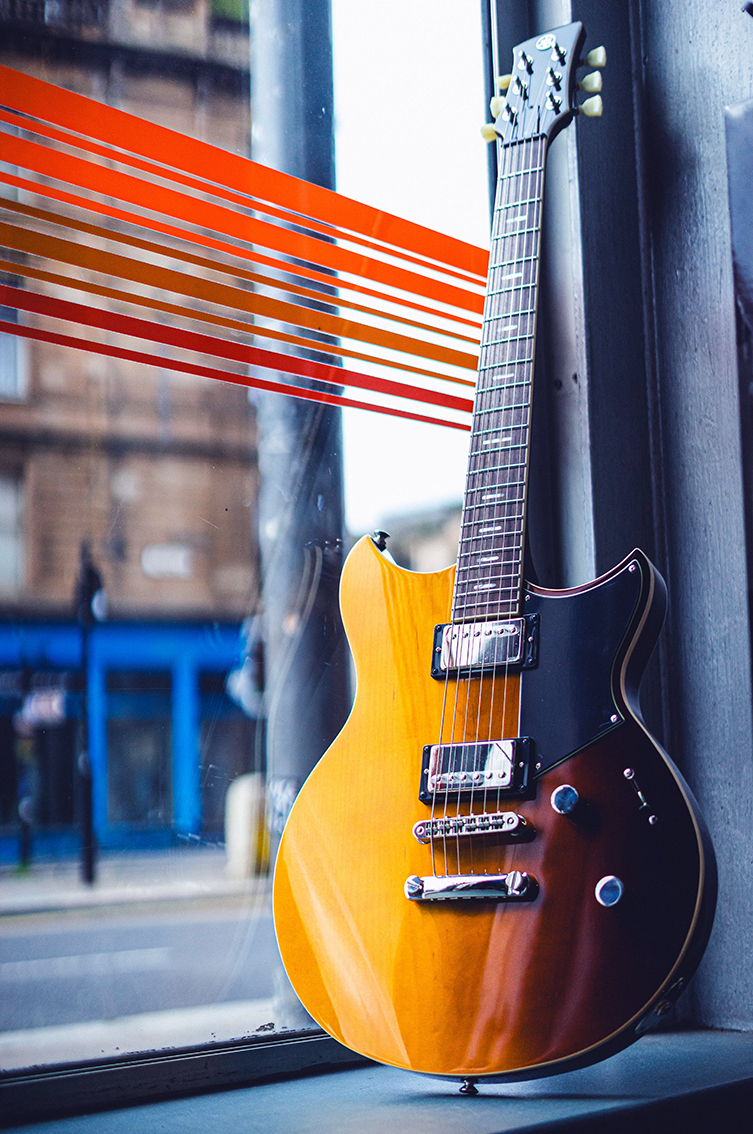
Sitting somewhere between a Gibson SG and a Yamaha SG (see below), the Revstar is a doublecut guitar with a fair amount of Gibson style in its DNA: mahogany bodies, three-a-side headstocks, humbuckers and P90s prevail here, with a body style that is classic and timeless yet chic and modern.
As I say, not an easy task to create! The Revstar range - like all Yamaha electric guitar styles - is available in a few variations that span a few hundred pounds to a few thousand. Higher priced Revstars feature decorative tailpieces, upgraded pickups and extra electronics, but I can absolutely tell you that the most affordable model - the Revstar RSE20 - is an impressive instrument that I’d happily and confidently take on stage.
YAMAHA SG
The Yamaha SG is a straight-up classic electric guitar. Carlos Santana brought one onstage at Woodstock, Bill Nelson used one in Be Bop Deluxe and several key players in the post-punk movement - namely Stuart Adamson from The Skids/Big Country and John McGeoch from Siouxsie and the Banshees - gave the guitar a level of credibility that speaks much more loudly than any advertising.
The Yamaha SG was a legitimate alternative to the Gibson Les Paul back in the late 60s and 70s. With a thick body, set neck, dual-pickup configuration and decorative elements that absolutely referred to the Les Paul Custom, the Yamaha SG had its reference points for sure, but it was and is still very much an original design. The SG200, which came out in 1976, actually benefitted from playtesting and feedback by Santana, who urged the company to add more sustain thanks to a hidden brass sustain block.
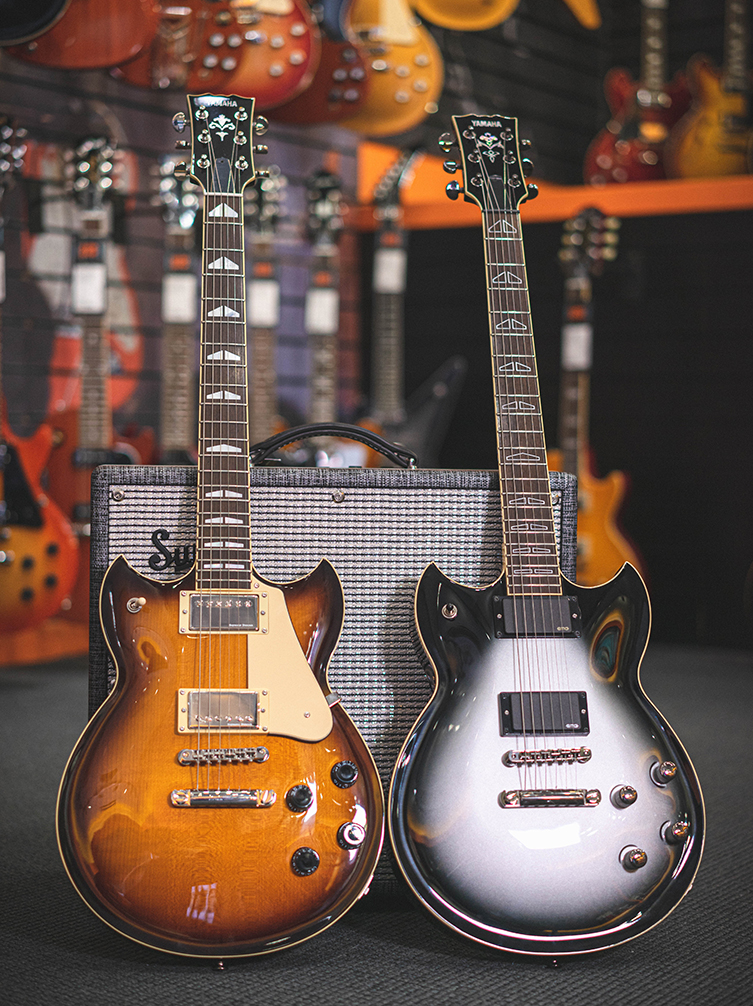
As a lead guitar, the SG offers unparalleled access to the full fingerboard, and has sustain for days. As a rhythm guitar, the blend of mahogany and brass give the guitar a chunk that absolutely rivals the LP. Models have appeared with P90s, humbuckers and active humbuckers, with all three varieties being available at the time of writing.
Basically, the Yamaha SG is a huge sounding rock guitar with a beautiful and unique look.
Yamaha SA
SA stands for Semi Acoustic and this should give a very big clue about the style and vibe of these guitars! Yep, they are thinline semis, based on the ES-335 blueprint. Perfect for jazz, blues and fusion playing, models such as the SA2200 ooze quality and opulence with its gold hardware, decorative inlay work and sumptuous figured maple top.
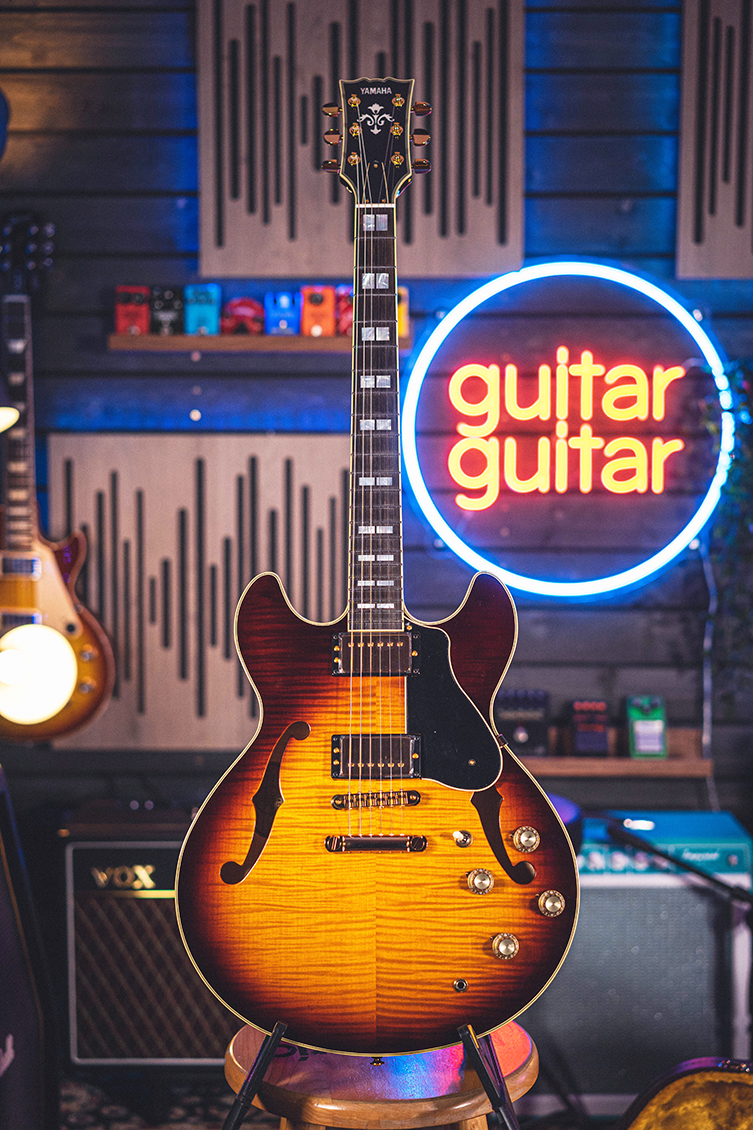
Rather than being a mere copy of a 335, the Yamaha SA guitars are revered by tasteful tonemongers as being very much their own thing.
Which Yamaha Electric is Right for You?
So, those are the main styles used by Yamaha. But which should you go for?
Beginners: the Pacifica 012 and Pacifica 112J are sure bets: they will go the distance with you, offer comfort, control and a good range of sounds. There’s nothing much else that competes at around the £200 price mark. The most affordable Revstar is nearly double the price, but as I’ve mentioned already the RSE20 is a fabulous guitar at any level, and is extremely impressive for the price. Buying this would save you upgrading in the future, perhaps?
Gigging players: In terms of the Pacifica, there’s a very large selection available so it may be worth trying a number of different models to zero in on which configurations work best for you. I’d start off with the Pacifica 212 VQM with it’s attractive quilted maple veneer and upgraded alnico pickups, or the Pacifica 612 FM MKII, which adds top tier branded hardware from Gotoh and Wilkinson, plus a set of USA-made Seymour Duncan pickups.
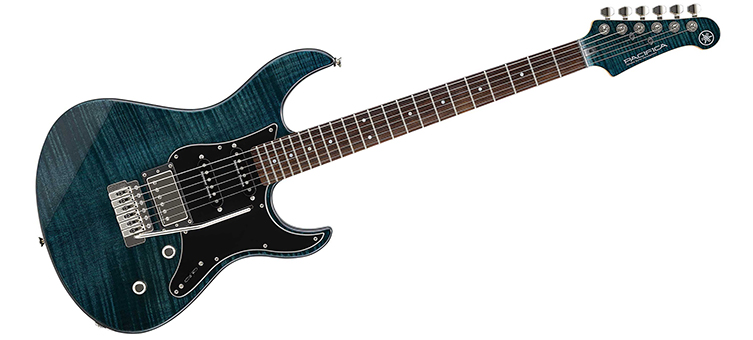
For Revstars, check out the RSS20 and RSS02T. The former packs two alnico humbuckers and stainless steel frets into the package (which comes in a wide range of finishes complete with stripes) and the latter boasts P90s, a cool tailpiece and slightly less colours. Both have chambered bodies, stainless steel frets and a 5-way switch, along with a Focus Switch, a passive feature that loses some highs in favour of more mids and bass.
Top-End Choices: The new Yamaha Pacifica Professional PACP12M is pretty much the top tier choice for those seeking a Yamaha superstrat. This one has the Rupert Neve pickups and the Gotoh hardware.
For Revstar models, look toward the RSP20 for their top humbucker-equipped model. Japanese-made, it’s a fantastic example of modern yet classic guitar making.
In this price range, you’ll also have access to the Yamaha SG, and which model you go for will largely depend on what style of pickups work for you. All of the top models have an 18 in their title, so try an SG1802 Goldtop with P90s; the SG1820A has active EMGs and the GS1820 model has a pair of Seymour Duncan ‘59 humbuckers. All have thick 3-piece mahogany bodies with maple tops, locking Grover tuners and 24.75” scalelength necks with 13.75” radius fingerboards.
Finally, those looking to spend on an elegant semi acoustic should go straight for the Yamaha SA2200.
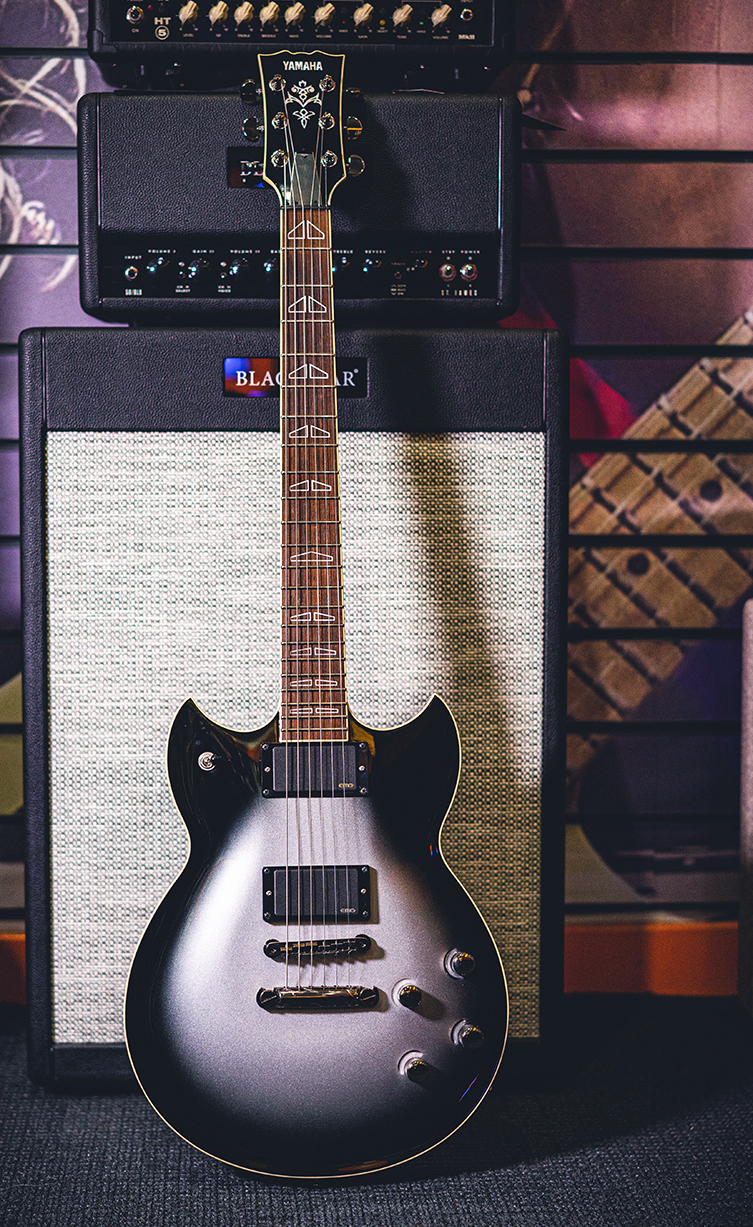
From Beginner to Pro
Yamaha really do offer a guitar for every player. Beginners, advancing players, proficient guitarists and busy professionals are all well-served by at least a few choices from Yamaha’s guitar catalogue.
What’s interesting is how original the guitars actually are. I’m not saying there’s no precedents here in terms of inspiration - they are all clearly inspired by existing guitars - but I don’t think you could call any of these instruments derivative copycats. They all have very much their own character and vibe, and they all offer something different to each other.
Yamaha have always been well-known for high quality stuff, but I’d highlight just how well their current instruments are turning out, and invite you to take a closer look at any you feel drawn to: there’s a lot to like here!
Browse our Full Selection of Yamaha Electric Guitars


